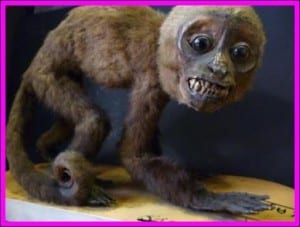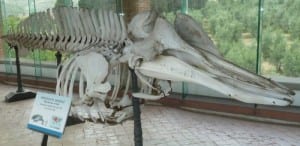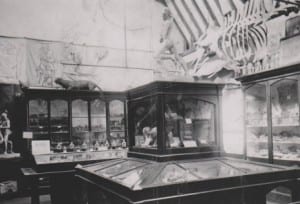Specimen of the Week: Week 169
By Dean W Veall, on 5 January 2015
 Dean Veall here. A very Happy New Year to all our readers. I thought I would start 2015 BIG, 26ft and 6in BIG to be quite exact. This specimen belongs to the group containing the biggest animals to have ever lived. It is also part of the BIGGEST ever fundraising campaign the Museum has ever run, Bone Idols: Protecting our Iconic Skeletons.
Dean Veall here. A very Happy New Year to all our readers. I thought I would start 2015 BIG, 26ft and 6in BIG to be quite exact. This specimen belongs to the group containing the biggest animals to have ever lived. It is also part of the BIGGEST ever fundraising campaign the Museum has ever run, Bone Idols: Protecting our Iconic Skeletons.
The Bone Idols project involves a series of interventions on 39 of our largely uncollectable specimens which includes re-casing some, completely remonting others and cleaning of these specimens that have been on open display since the 1820’s. This week’s Specimen of the Week is……
**The northern bottlenose whale (Hyperoodon ampullatus)**
1). Natural history of the species
The northern bottlenose whale (Hyperoodon ampullatus) belongs to the cetacean family Ziphiidae or beaked whales and is one of 22 species. This species is characterised by their large bulbous forehead, which becomes more pronounced in males as they get older. They are endemic to the north Atlantic Ocean in the cold waters of the sub-Arctic. Feeding mainly on squid and fish they hunt to some of the deepest depths of any mammal, some 1450m. However, observations of the species have noted how they come to shallow waters to play and rest and have been described as having a curious disposition especially towards human vessels. It was probably this curiosity that led them being easy targets for hunters in the 19th century with a recorded 65,000 being taken.
2). More than a head
The specimen that featured above in the image is the skull and mandible, but here in the Museum we have the rest of the disarticulated skeleton hidden away in our dry store including: 24 vertebrae, 19 intervertebral discs, articulated scapulae with humerii, articulated sternal plates, 18 ribs and one rib fragment. Thems the ingredients for making a northern bottlenose whale skeleton and put them all together and you’d get something that might look a little bit like this:

Mounted bottlenose whale skeleton on display at Museo di storia naturale e del territorio dell’Università di Pisa. Taken by Notafly
3). Shooting at whales
The archive tells us that the specimen first came into the Grant Museum in 1948 when it was sent to UCL after a ‘reorganisation’ at its original home at the Albert Memorial Hall and later Woodspring Museum, both in Weston-Super-Mare, Somerset. How did they come to acquire such a beaut of a specimen? Well, November 7th 1860 began unremarkably for Mr George Elwell as he started on on a morning shoot. On his way he encountered a man heading down who relayed an extraordinary sight of “two giant fish” in the bay. Elwell and others jumped in a boat and the unfolding scene was described as the most exciting in the annals of the town.
Armed with his double barreled gun, Mr Elwell began firing at the whales, one fled the bay and headed out to open water. The other however, put up a “great fight” and it took 20 rounds before it finally died. The whale was towed to land and taken to Bristol to display. This 26ft long and 12ft round beast proved a popular draw, raking in £30 a day in admission tickets.
Based on these impressive takings, after six weeks a Mr Edward Goodingham bought the carcass for £120, planning to having it stuffed and touring the country. This did not prove wise – it decomposed almost immediately. He managed to recoop £5 for the skeleton, and it is believe to have returned to Weston then, before being sold on to Albert Memorial Hall’s founder, Benjamin Mable.
Mable buried it in the grounds of a local school for two years to allow nature to clean the skeleton, a process which was completed by his wife who then boiled it bone by bone in her copper tub. It was then wired together and displayed in the museum. We don’t know if it was disarticulated before or after arriving in the Grant.
4). A contemporary whale spectacle
What a sight for the Victorian residents of Weston-super-Mare that whale stranding must have been. But of course we don’t have to imagine too hard as we have experienced something very similar happen in the recent past here in London, the Thames Whale. Thankfully, the Homo sapiens’ response this time was somewhat more humane, coming to aid of this northern bottlenose whale. The juvenile female was discovered swimming up the Thames in January 2006, possibly due to a navigational error. For three days the whale drew huge crowds to the foreshore, including yours truly. Despite a massive effort led by the British Diver Marine Life Rescue and the Metropolitan Police to try and get her back to open water, the young whale died from a combination of dehydration and kidney failure.
5). Bone Idols
This specimen has more than likely been on open display since the 1860’s, over 150 years exposed to the air, dirt and of late, the pollution of the London. So it’s about time we gave it a good clean, and that’s exactly what we intend to do with through the Bone Idols project, using specialist conservation cleaning products, UCL Museums conservators will give this specimen a deep clean. If you would and are interested in supporting this major project please visit the Bone Idols website.
Dean Veall is Learning and Access Officer at the Grant Museum of Zoology
 Close
Close





